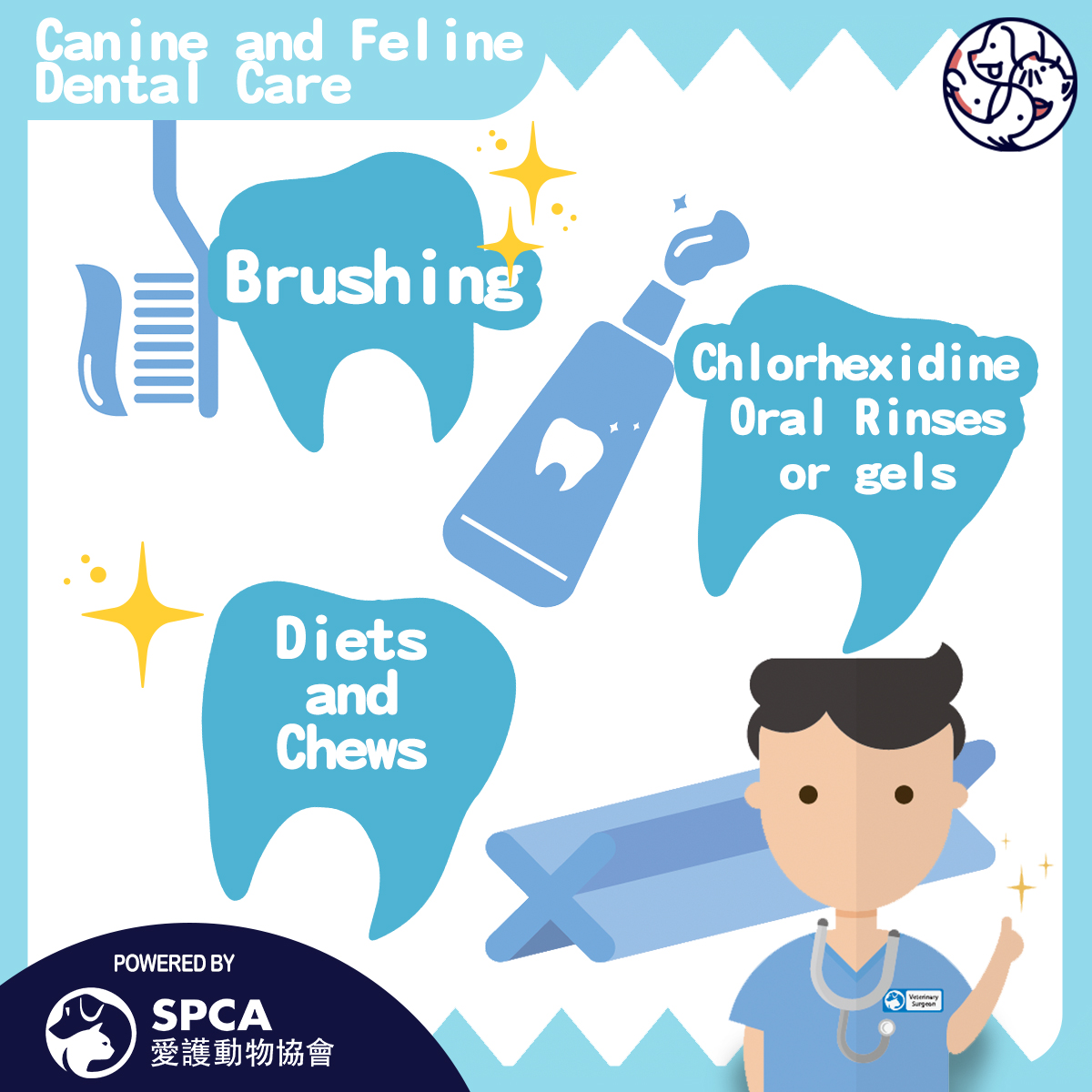Canine and Feline Dental Care – Let’s Talk about Teeth!
Home oral hygiene can make a tremendous difference to your pet’s comfort and health. Here are some commonly used options proven to be of benefit to dogs and cats. All methods aim to prevent or control periodontal disease by minimising “plaque” accumulation and stopping mineralisation of plaque to form calculus. The key is not necessarily which method is used, but the fact it is used REGULARLY and for the LONG-HAUL.

Brushing
Periodontal disease is caused by plaque, a bacterial film which is easily disrupted by brushing the teeth. Daily brushing is recommended to maintain optimal dental health, ideally using toothbrushes and toothpastes designed for pets. Avoid human toothpastes as they often contain abrasives and high-foaming detergents that should not be swallowed or inhaled.
How to brush your pet's teeth
1. Let your pet lick the dentifrice, which is usually flavoured, from your fingers.
2. Put some on the toothbrush, then slowly place it in your pet’s mouth and gently brush.
Tips:
• Be patient: Acceptance of brushing can take from days to 1-2 months.
• Brush mainly the outsides of the “cheek teeth” located under the upper lip.
• Finger toothbrushes are often better tolerated than regular toothbrushes.
• A pet that continuously resists brushing may have painful areas in the mouth that need veterinary attention.
Chlorhexidine oral rinses or gels
Chlorhexidine is the most effective anti-plaque antiseptic and is safe to use on pets. It binds to the oral tissues and tooth surfaces, and is gradually released into the oral cavity. Chlorhexidine comes in both rinse and gel form.
How to use:
• Rinse: squirt a small amount inside the cheek on each side of the mouth.
• Gel: smear onto the teeth with your finger or apply using a toothbrush.
• The tongue and lips will spread the rinse or gel around the mouth.
Diets and Chews
Dental-specific diets can be of benefit in retarding accumulation of dental plaque and tartar and decreasing dental disease. Some employ a specific kibble design and others include a chemical anti-tartar polyphosphate ingredient.
Unlike dogs, cats are very individualistic in their acceptance of home oral hygiene. You may need to try several options to find the technique and product that your cat tolerates best, as with dogs, examples include brushing, finger-brushing, dental rinses or gels, dental diets.
For more details including videos on dental care, please visit our website at: Dental Care
And as always, consult your veterinary surgeon if you have any questions or concerns!
Source:SPCA (HK)
FB: https://www.facebook.com/spcahk/
IG: https://www.instagram.com/spcahk/
About PET-A-HOOD
Our platform is a one-stop destination for the latest and the most comprehensive pet-related information. From helping you discover pet-friendly businesses nearby, to planning fun weekend activities, we are your trusted partner when it comes to curating a healthy and exciting lifestyle for your pet friends and you. We also encourage pet owners to build their Pet’s Social Community through Pet-a-hood, by exchanging pet-caring experience, pet-related news, and connecting with other pet lovers in the neighbourhood.



